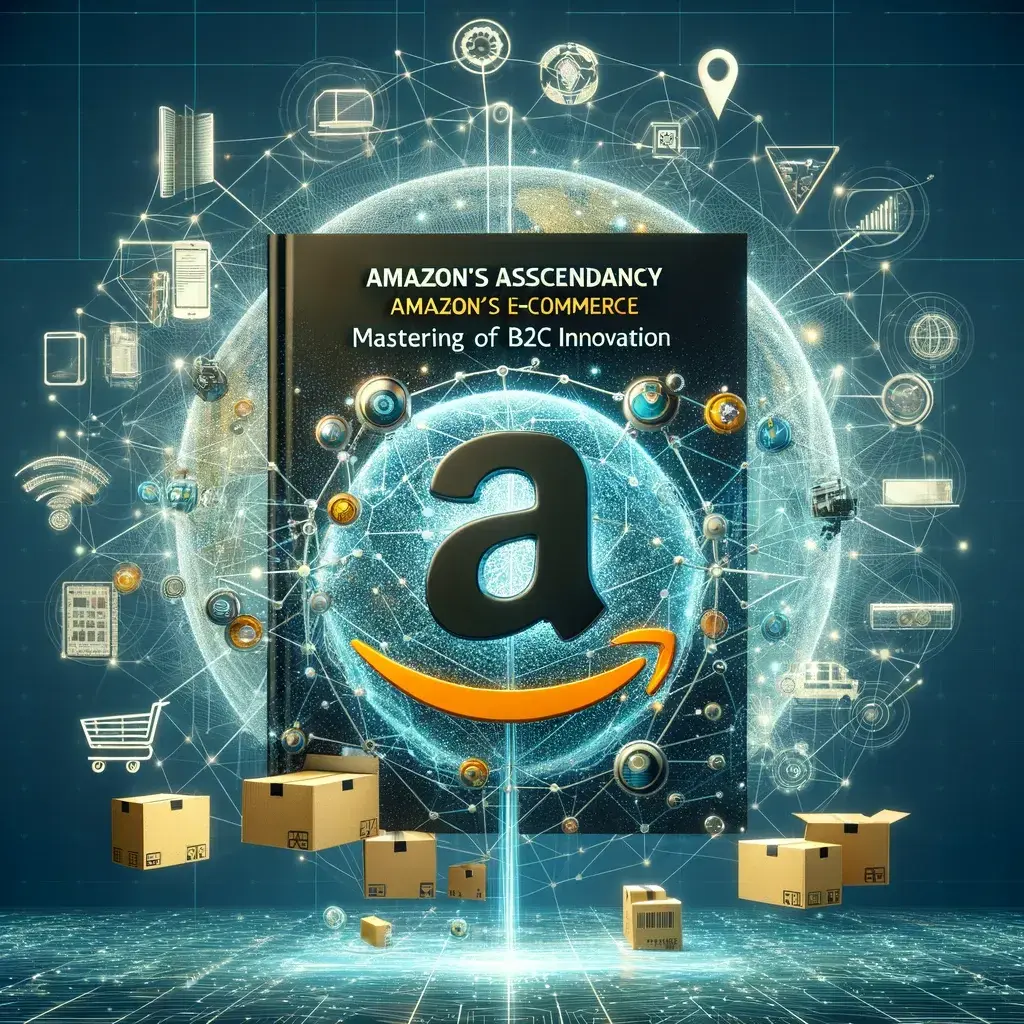
Introduction to Amazon B2C Commerce
In the ever-evolving landscape of e-commerce, Amazon B2C commerce stands as a towering giant, shaping consumer buying habits and industry standards. B2C, or Business-to-Consumer commerce, involves transactions that take place directly between a business and individual consumers. Amazon, with its expansive product offerings and innovative shopping experiences, has become synonymous with online retail. This article delves into Amazon’s B2C strategies, the latest trends for 2024, and what lies ahead for this e-commerce behemoth.
Historical Context of Amazon B2C
Evolution of Amazon from Bookseller to E-Commerce Giant
Founded in 1994 by Jeff Bezos as an online bookstore, Amazon quickly diversified its offerings to include electronics, clothing, and more. Over the years, it has introduced groundbreaking services like Amazon Prime, which revolutionized shipping and customer loyalty.
Key Milestones in Amazon’s B2C Development
- Launch of Amazon Prime: Launched in 2005, this subscription service not only provided free two-day shipping but also included access to streaming services, fundamentally changing consumer expectations regarding delivery speed and value.
- Introduction of Marketplace Sellers: In 2000, Amazon opened its platform to third-party sellers, enabling millions of small businesses to reach a broader audience. This move significantly boosted Amazon’s product catalog and revenue.
- Expansion into International Markets: Amazon’s global footprint has expanded to numerous countries, adapting its strategies to local markets and consumer preferences.
Current Landscape of Amazon B2C Commerce

Market Share and Positioning
As of 2024, Amazon commands an impressive 40% of the U.S. e-commerce market. This dominance is attributed to its extensive product range, customer-centric approach, and continuous technological advancements. In comparison, major competitors like Walmart and Alibaba hold 6% and 11%, respectively, showcasing Amazon’s significant lead.
Customer Demographics and Behavior
Amazon’s customer base is diverse, with millennials and Gen Z accounting for a significant portion of sales. Recent studies reveal that 75% of younger consumers prefer shopping on Amazon due to its convenience, variety, and pricing. Trends indicate an increasing preference for mobile shopping, with 60% of Amazon transactions occurring via mobile devices in 2024.
Key Strategies Employed by Amazon
Customer-Centric Approach
Amazon’s unwavering commitment to customer satisfaction has made it a reliable and trusted retail destination.
- Personalization and Recommendations: Leveraging data analytics, Amazon provides tailored recommendations, enhancing user experience and increasing conversion rates.
- Customer Reviews and Feedback Mechanisms: With over 50 million product reviews, Amazon encourages customer feedback, fostering trust and transparency.
Pricing Strategies
Amazon’s pricing strategy revolves around dynamic pricing, allowing it to adjust prices based on market demand, competition, and inventory levels. The introduction of Amazon Prime Day has further strengthened its position by offering exclusive deals, driving significant sales and membership growth.
For more interesting blogs, visit our site: https://futuretrendz.co.uk/
Logistics and Fulfillment Innovations
Amazon’s logistics network is a cornerstone of its B2C strategy.
- Amazon Fulfillment Centers: With over 175 fulfillment centers globally, Amazon ensures rapid shipping and inventory management.
- Same-Day Delivery and Last-Mile Logistics: Innovations such as Amazon Flex and Prime Air aim to enhance last-mile delivery efficiency, meeting consumer expectations for speed.
Technological Innovations Driving B2C
Role of Artificial Intelligence and Machine Learning
AI and machine learning play pivotal roles in optimizing product recommendations, inventory management, and customer service. For example, Amazon’s Alexa facilitates voice shopping, introducing a fresh layer to the consumer experience.
Impact of Augmented Reality on Shopping Experience
In 2024, Amazon has expanded its use of Augmented Reality (AR), allowing customers to visualize products in their own space before making a purchase. This immersive shopping experience has been particularly impactful in categories like furniture and home decor.
Voice Commerce through Alexa
Voice shopping is projected to reach $40 billion in sales by 2024, with Amazon Alexa leading the charge. The convenience of voice-activated shopping continues to attract consumers, integrating seamlessly into their daily lives.
Trends Shaping the Future of Amazon B2C

Rise of Subscription Services
Subscription services are on the rise, with Amazon offering an array of options from groceries to streaming. The introduction of Amazon Fresh and Subscribe & Save has attracted consumers seeking convenience and cost savings.
Expansion of Private Label Products
Amazon’s private label brands, like AmazonBasics and Amazon Essentials, have gained significant traction. These products offer quality at competitive prices, allowing Amazon to capture more market share.
Sustainability and Ethical Consumerism
In response to growing consumer demand for sustainable practices, Amazon is investing in eco-friendly initiatives. Programs like Frustration-Free Packaging and commitments to carbon neutrality by 2040 reflect Amazon’s efforts to meet ethical consumer standards.
For more interesting blogs, visit our site: https://futuretrendz.co.uk/
Challenges Faced by Amazon in B2C
Regulatory Scrutiny and Antitrust Issues
As Amazon continues to grow, it faces increasing scrutiny from regulators concerned about monopolistic practices. Antitrust investigations in the U.S. and Europe could potentially reshape Amazon’s business model.
Competition from New Entrants and Niche Players
The e-commerce landscape is becoming more crowded, with new entrants and niche players challenging Amazon’s dominance. Companies focusing on specialized markets are gaining traction, which could impact Amazon’s market share.
Managing Supply Chain Disruptions
The global supply chain challenges faced during the pandemic highlighted vulnerabilities in Amazon’s logistics. Ensuring stability and reliability in supply chains remains a top priority as the company scales its operations.
FAQs
1. What is B2C commerce?
B2C commerce refers to transactions conducted directly between a business and individual consumers.
2. How does Amazon’s pricing strategy work?
Amazon employs dynamic pricing, adjusting prices based on factors like demand and competition to remain competitive.
3. What role does technology play in Amazon’s B2C operations?
Technology, including AI and AR, enhances customer experience, optimizes logistics, and improves product recommendations.
4. What are the benefits of Amazon Prime?
Amazon Prime offers members benefits like free two-day shipping, access to streaming services, and exclusive deals.
5. How is Amazon addressing sustainability?
Amazon is implementing eco-friendly practices, including sustainable packaging and carbon neutrality goals, to meet consumer demand for ethical business practices.
Conclusion
As we look towards the future of Amazon B2C commerce in 2024 and beyond, it’s clear that the company will continue to innovate and adapt to changing consumer needs. From leveraging advanced technologies to addressing sustainability concerns, Amazon’s strategies will remain pivotal in shaping the e-commerce landscape. Businesses seeking to thrive in this dynamic environment must stay informed of these trends and consider how to effectively leverage Amazon’s platform to reach their target audiences. The journey of Amazon is far from over, and the future promises even more exciting developments in the realm of B2C commerce.
Learn more about emerging trends at Future Trendz.







